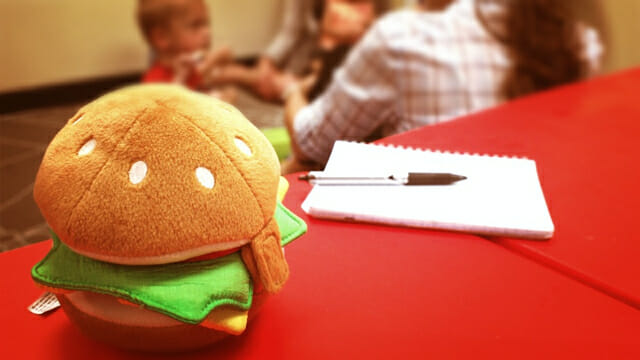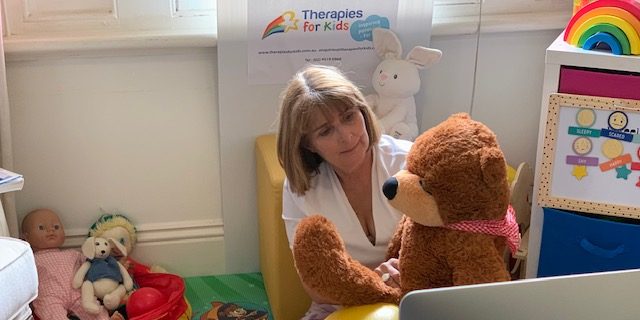What is it?
Dysphagia, also called swallowing disorders, can occur at different stages in the swallowing process:
- Oral phase – sucking, chewing, and moving food or liquid into the throat
- Pharyngeal phase – starting the swallow, squeezing food down the throat, and closing off the airway to prevent food or liquid from entering the airway (aspiration) or to prevent choking
- Esophageal phase – relaxing and tightening the openings at the top and bottom of the feeding tube in the throat (esophagus) and squeezing food through the esophagus into the stomach
Feeding disorders include problems gathering food and getting ready to suck, chew, or swallow it. For example, a child who cannot pick up food and get it to her mouth or cannot completely close her lips to keep food from falling out of her mouth may have a feeding disorder.

What are some signs or symptoms of feeding and swallowing disorders in children?
Children with feeding and swallowing problems have a wide variety of symptoms. Not all signs and symptoms are present in every child. The following are signs and symptoms of feeding and swallowing problems in very young children:
- Arching or stiffening of the body during feeding
- irritability or lack of alertness during feeding
- refusing food or liquid
- failure to accept different textures of food (e.g., only pureed foods or crunchy cereals)
- long feeding times (e.g., more than 30 minutes)
- difficulty chewing
- difficulty breastfeeding
- coughing or gagging during meals
- excessive drooling or food/liquid coming out of the mouth or nose
- difficulty coordinating breathing with eating and drinking
- increased stuffiness during meals
- gurgly, hoarse, or breathy voice quality
- frequent spitting up or vomiting
- recurring pneumonia or respiratory infections
- less than normal weight gain or growth
- As a result, children may be at risk for:
- dehydration or poor nutrition
- aspiration (food or liquid entering the airway) or penetration
- pneumonia or repeated upper respiratory infections that can lead to chronic lung disease
- embarrassment or isolation in social situations involving eating
What causes feeding and swallowing disorders?
- nervous system disorders (e.g., cerebral palsy, meningitis, encephalopathy)
- gastrointestinal conditions (e.g., reflux, "short gut" syndrome)
- prematurity and/or low birth weight
- heart disease
- cleft lip and/or palate
- conditions affecting the airway
- autism
- head and neck abnormalities
- muscle weakness in the face and neck
- multiple medical problems
- respiratory difficulties
- medications that may cause lethargy or decreased appetite
- problems with parent-child interactions at mealtimes


How are feeding and swallowing disorders diagnosed?
If you suspect that your child is having difficulty eating, contact your paediatrician right away. Your paediatrician will examine your child and address any medical reasons for the feeding difficulties, including the presence of reflux or metabolic disorders. A speech-language pathologist (SLP) who specializes in treating children with feeding and swallowing disorders can evaluate your child and will:
- ask questions about your child's medical history, development, and symptoms
- look at the strength and movement of the muscles involved in swallowing
- observe feeding to see your child’s posture, behaviour, and oral movements during eating and drinking
- perform special tests, if necessary, to evaluate swallowing, such as:
The SLP may work as part of a feeding team. Other team members may include:
- an Occupational Therapist
- a Physiotherapist
- a Physician or Nurse
- a Dietitian or Nutritionist
- a Developmental Specialist
Your child’s posture, self-feeding abilities, medical status, and nutritional intake will be examined by the team. The team will then make recommendations on how to improve your child’s feeding and swallowing.
What can be done…
Treatment varies greatly depending on the cause and symptoms of the swallowing problem. Based on the results of the feeding and swallowing evaluation, the SLP or feeding team may recommend any of the following:
- medical intervention (e.g., medicine for reflux)
- direct feeding therapy designed to meet individual needs
- nutritional changes (e.g., different foods, adding calories to food)
- increasing acceptance of new foods or textures
- food temperature and texture changes
- postural or positioning changes (e.g., different seating)
- behavior management techniques
- referral to other professionals, such as a psychologist or dentist
If feeding therapy with an SLP is recommended, the focus on intervention may include the following:
- making the muscles of the mouth stronger
- increasing tongue movement
- improving chewing
- increasing acceptance of different foods and liquids
- improving sucking and/or drinking ability
- coordinating the suck-swallow-breath pattern (for infants)
- altering food textures and liquid thickness to ensure safe swallowing
What you can do…
After the evaluation, family members or caregivers can :
- ask questions to understand problems in feeding and swallowing
- make sure they understand the treatment plan
- go to treatment plans
- follow recommended techniques at home and school
- talk with everyone who works with the child about the feeding and swallowing issues and treatment plan
- provide feedback to the SLP or feeding team about what is or is not working at home




